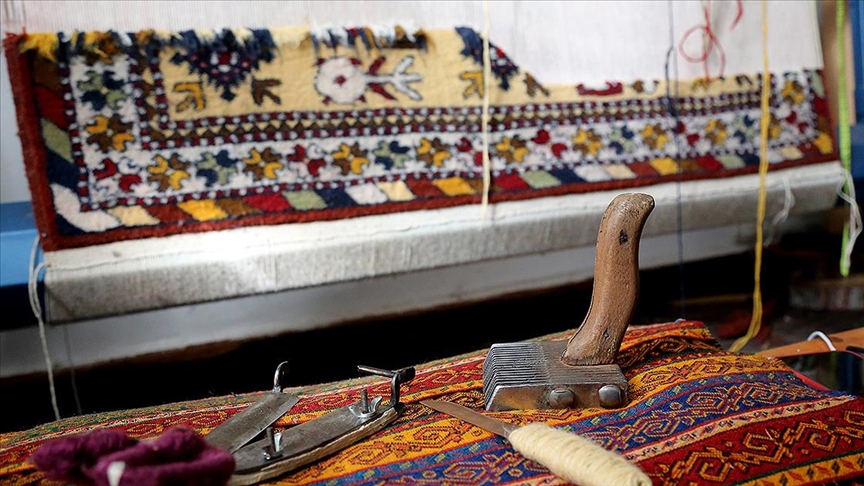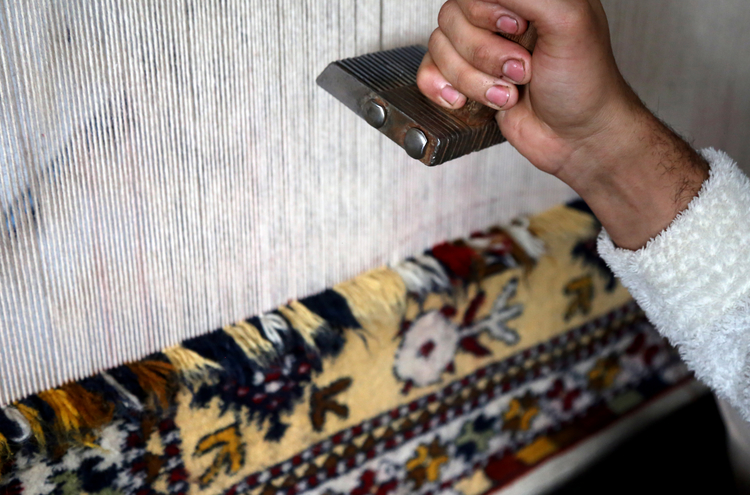The Milas Handwoven Carpet is an authentic handicraft product, certified with a geographical indication, that carries forward Anatolia’s deep-rooted weaving tradition. Registered as a geographical indication by the Milas Chamber of Commerce and Industry in 1997, this carpet stands out for its technical features and cultural background. Carrying centuries of heritage, the Milas Carpet reflects the traces of a life intertwined with nature through its colors and motifs. Woven using traditional techniques, these carpets bring the region’s historical identity and aesthetic understanding to the present. Each knot in these carpets carries the traces of the past, silently narrating and preserving cultural heritage.

Milas Handwoven Carpet (AA)
Historical Background
The history of weaving is as old as human history. Initially created for covering and protection, woven products gained aesthetic and cultural significance over time. There is a direct relationship between geography and weaving. Wool and hair are used in regions where animal husbandry is practiced, cotton fabrics in areas where cotton is grown, and silk textiles in regions with sericulture.
One of the earliest examples of Turkish weaving tradition is the Pazyryk Carpet, unearthed in 1949 by Professor Rudendo during excavations in a kurgan in the Altai Mountains. Measuring 200 × 189 cm, with a thickness of 2 mm and containing 36,000 knots per 10 cm², this carpet is recognized in global literature as the earliest example of the “Turkish knot” technique.
The presence of the Milas Carpet in Anatolia dates back to the 16th and 17th centuries. Initially woven in seccade (prayer rug) sizes to suit the nomadic Yörük lifestyle, these carpets were designed for portability and practicality. Over time, dimensions diversified in response to merchant demands. In the 19th century, with the onset of the Oriental carpet trade by the British, European Baroque influences began to appear in Milas carpets, with an increase in floral motifs and the introduction of a central “medallion” design.
Technical Features
The Milas Handwoven Carpet is crafted using the traditional “double knot” (Turkish knot) technique with wool yarn on looms called “ıstar.” According to its registration document, the technical specifications of the carpet are as follows:
- Quality: 26x40
- Knot Density: 1,040 knots/dm²
- Pile Height: 7–8 mm
- Yarn Specifications:
- Pile Yarn: 2.5/2 Nm wool
- Warp Yarn: 4/3 Nm wool
- Weft Yarn (thick and thin): 4/2 Nm wool
- Material Consumption (g/m²):
- Pile: 3,950
- Warp: 800
- Thick Weft: 350
- Thin Weft: 400
- Total: 5,500

Milas Handwoven Carpet (AA)
Color and Motif Richness
The Milas Carpet is woven with wool yarn dyed using natural root dyes. Dominant colors include shades of red and yellow, derived from plants such as almond branches, oak leaves, artichoke, mint, and walnut. A total of 26 known colors are used, adding aesthetic and cultural depth to the carpet through this natural dyeing tradition.
Motifs serve as a non-verbal means of communication, reflecting the emotions and thoughts of the women who weave them. Common motifs in Milas Carpets include eşme, cıngıllı Cafer, tobacco leaf, eggplant leaf, aynalı papuç (mirrored slipper), eğmeli göllü, water path, Ladik tulip, chicken foot, snake amulet, and tree of life. The structural components of the carpet are referred to as “small water, notch, cow urine, mihrab, medallion, and curve.”
Production and Prevalence
The weaving tradition continues in a limited number of villages around Milas, including Bodrum Karaova, Karacahisar, Ören, Türkevleri, Çökertme, Bozalan, Kayaönü, Gürceğiz, Bayır, Mumcular, and Çitlik, where efforts are made to keep this tradition alive.
Milas Carpets are named based on their motif and color variations, including types such as Milas, Karaova Ada Milas Piçi, Snake-patterned Milas, Bozalan Ladik, Karacahisar Medallion, Şişeli, Kabuksuz, and Caferli Carpet.
Inspection and Protection
The protection of the Milas Handwoven Carpet under its geographical indication is ensured through quality control commissions during production and marketing. Products that do not meet the technical specifications are not permitted to be sold under the name “Milas Handwoven Carpet.” This practice aims to preserve the product’s cultural identity and traditional value.


